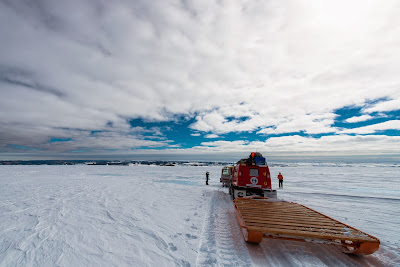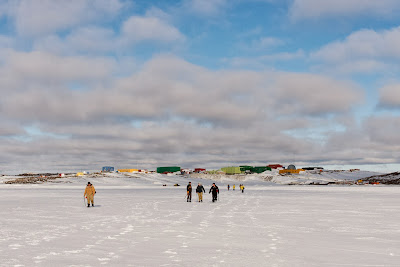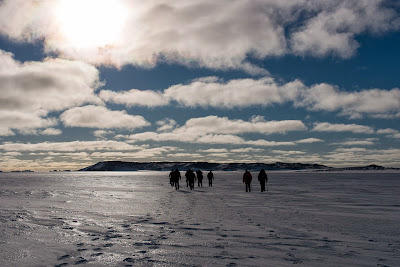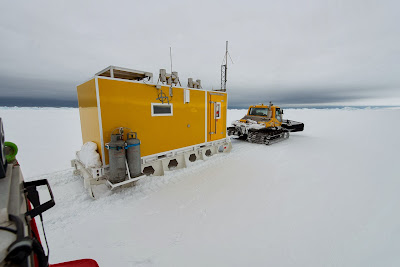It all started on Thursday. We got a radio call from a field science party that was in the process of watching their irreplaceable work shelters filled with their expensive equipment slowly sink into the water at Organic Lake. A combination of the recent Blizzard, warm temperatures and salty water (Organic is 6x saltier than the ocean) meant the ice on the lake started to rot and cause the shelters to sink.
Technically the tradesmen are down here as 'science support' so we got the job of going out to 'support' them... Without further ado we loaded a chopper up with some Hagglund recovery equipment and headed out into the field.
 |
| Everyone chipped in to help! |
One the shelters were on dry 'ice' the Helos came back in to sling them to safety!
Later than evening we got a group together to go for a walk to Gardiner Island where the Adelie Penguins have a rookery.
We had some other members try to join the walk but we had to turn them away since they weren't on the list.
 |
| Skuas. Think a giant Seagull... |
 |
| There is one in every crowd! |
Then yesterday (Friday) I got asked to help take some cargo and equipment up to Woop-Woop which is our skiway on the Plateau. Its a pretty decent drive, about 10 hours driving over sea ice and then uphill to the skiway.
 |
| I managed not to crash into the DC3! |
Finally at Woop-Woop! 360deg views of nothing but snow and ice.
 |
| Coming back down the Plateau |
Unfortunately our route home was littered with pesky icebergs that we had to continually avoid..
 |
| So annoying... |





































